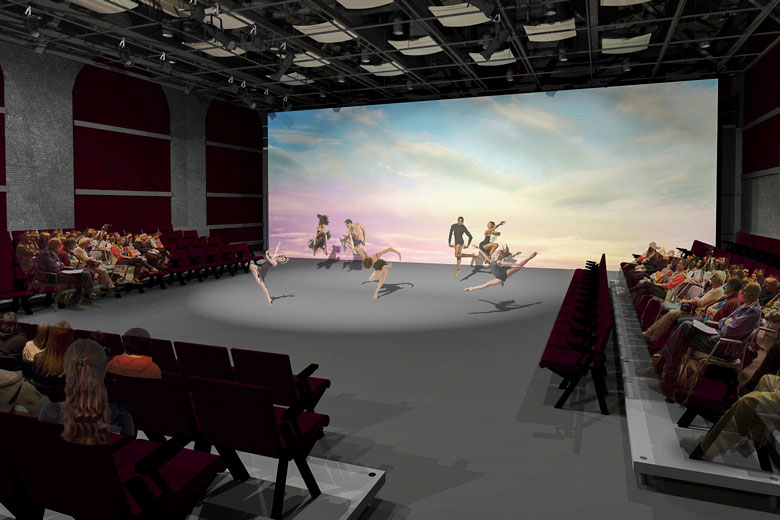Stanford's historic Roble Gym to open in the fall after arts-oriented renovation
Harry Elam, vice provost for undergraduate education and a drama professor, will direct the first theater production in the newly renovated building.
Roble Gym is undergoing a $28 million renovation to provide new program spaces for theater and dance productions for the Department of Theater & Performance Studies.
The Roble upgrade will be finished late spring or early summer, and then open to students when the fall term begins in September.
One key goal is to create a multipurpose "arts gym," a one-of-a-kind drop-in art-making studio and rehearsal space for students working on independent projects.
The historic Spanish Revival exterior, courtyard and landscaping are being rehabilitated in the spirit of the original design that dates back to 1931, when Roble opened as a women's gym. The building's infrastructure will be updated, including its accessibility, mechanical, plumbing, electrical, safety and egress systems.
Roble Gym, on the west side of campus at 285 Santa Teresa Street, will serve the needs of the Department of Theater & Performance Studies (TAPS), which is dedicated to integrated learning in performing arts through intensive studio training and rigorous instruction.
Arts expansion on campus
The Roble Gym upgrade is an investment that follows three new arts buildings on campus over the last three years, reflecting the university's commitment to making the arts a fundamental element in a Stanford education.
New to Roble is a black box theater with flexible seating options for dramatic works, a renovated dance studio for rehearsals and productions in dance, and additional spaces for rehearsals and instruction. The black box theater and dance studio will support innovative work in all areas of theatrical performance: from re-imagining of the classics to new and original work created by students and instructors.
The first production in the theater will be the musical Spring Awakening, directed by Harry Elam, vice provost for undergraduate education and the Olive H. Palmer Professor in the Humanities. The fall production is part of the Main Stage theme for 2016-17, New Worlds.
The 2016-17 season will close with a production of Shakespeare's The Tempest in the spring, directed by Amy Freed, TAPS artist-in-residence. Additional programming in Roble Gym will be announced this spring.
"The Roble Gym renovation is a landmark for TAPS. It is the largest capital investment exclusively dedicated to theater – the first building reconstructed with the needs of a theater department in mind," said Branislav Jakovljevic, the chair of TAPS.
"Roble has the potential to bring theater at Stanford up to date, both in terms of theater technology and ways of making theater. It has the potential to open up a well of creativity and challenge students to do things differently and to make theater in new ways," he said.
Creative art space
The arts gym will be a creative art space open to all Stanford students.
For example, students will be able to use the gym to create work assigned in Creative Expression courses, rehearse with their extracurricular arts group or do creative projects with no course affiliation. An undergraduate breadth requirement, Creative Expression focuses on art making, performance and other kinds of creative practice.
The arts gym will not be used as a classroom space. Students will swipe their ID cards to gain access to space for informal performance and rehearsal, an art-making studio equipped for oil painting and temporary artwork storage, a music room with a sound booth, and a community of art-makers. Minimal orientation training will be required to use the space. The emphasis will be on ease of access.
Excited by the prospect of extracurricular student groups having space in the building, Jakovljevic hopes the arts gym will further strengthen the relationship between academic arts disciplines and self-guided arts exploration. He describes TAPS' relationship with student groups as symbiotic.
Media Contact
Robin Wander, University Communications: (650) 724-6184, robin.wander@stanford.edu
Stefanie Okuda, Theater & Performance Studies: sokuda@stanford.edu
Clifton B. Parker, Stanford News Service: (650) 725-0224, cbparker@stanford.edu


Share This Story